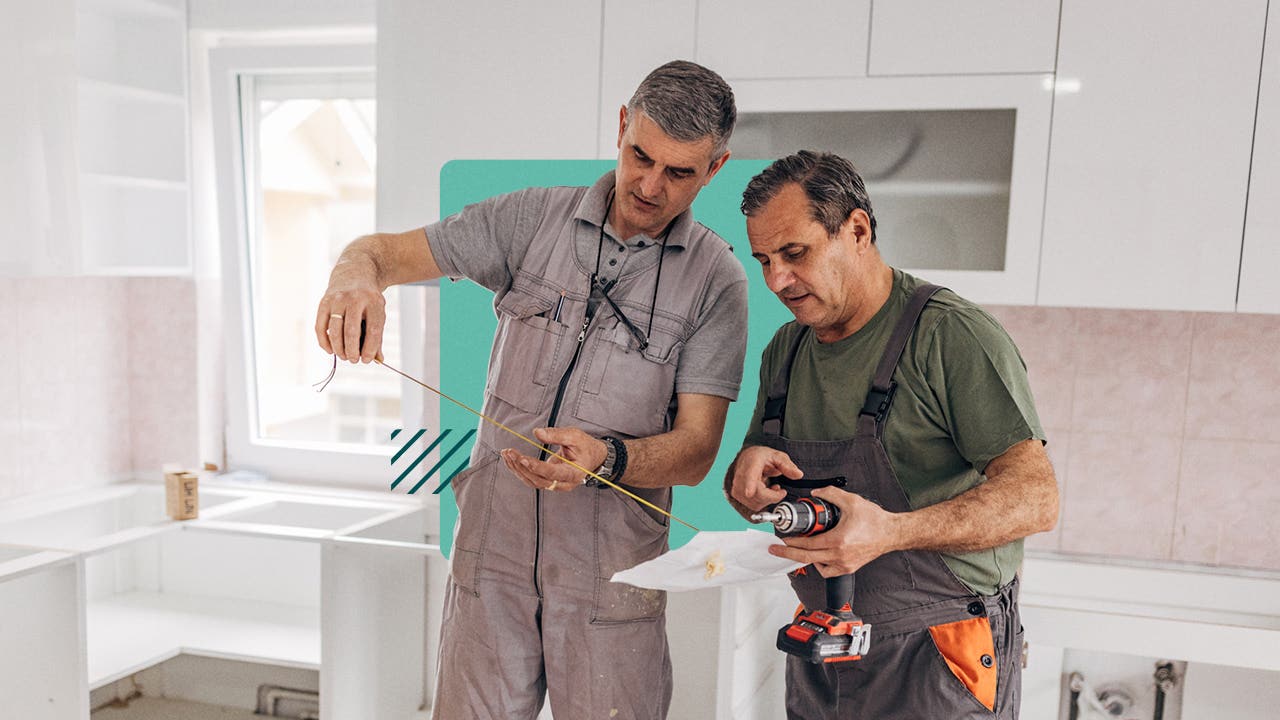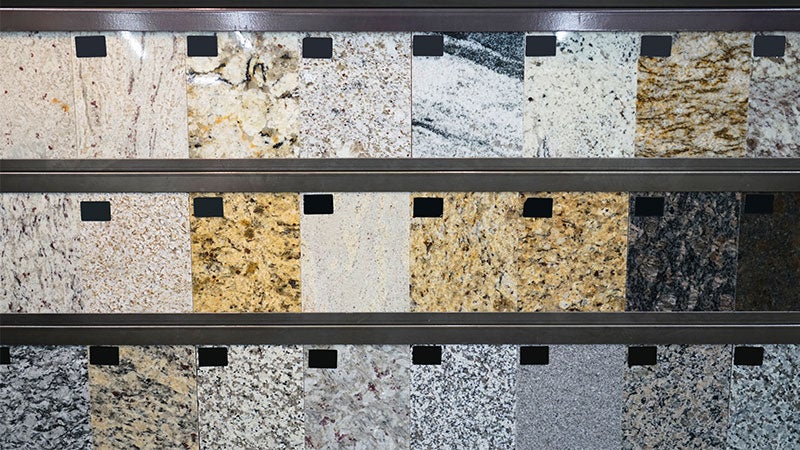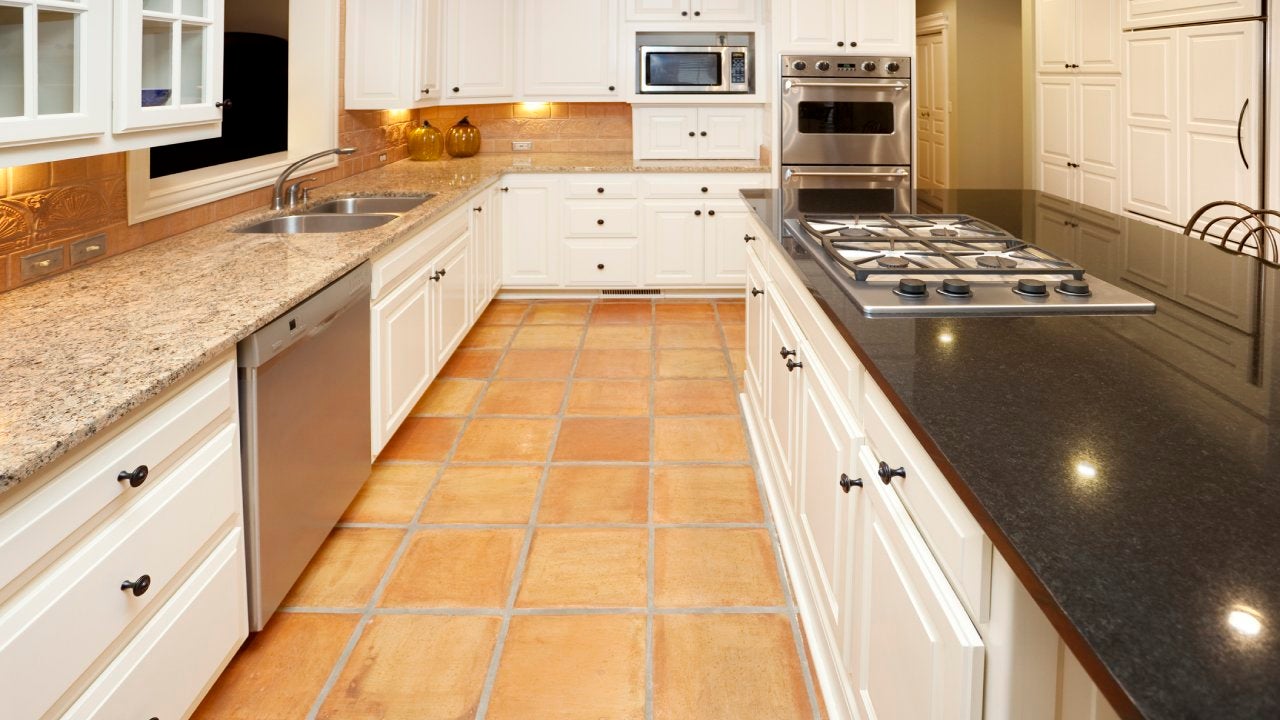How much do kitchen cabinets cost?

What’s the most expensive part of a kitchen remodel — adding state-of-the-art appliances? Installing a new floor? No, the single biggest item is the kitchen cabinets. While many homeowners might think new cabinetry is somewhat cosmetic, it actually makes up the lion’s share of a kitchen redo’s expense — 41 percent, according to Angi, the contractor search site.
The exact dollar cost of your new kitchen cabinets depends on exactly how you’re going to refresh them. In terms of national averages, it can run anywhere from $2,946 to $5,435 to $7,113, respectively, depending on whether you just refinish them (change their color), replace them entirely, or resurface/reface them (put new material on top of the existing cabinet frames and replace doors and drawer fronts).
On the plus side, new cabinets are an easy way to give your kitchen an instant facelift and improve your home’s value. And, as home renovations go, they’re fairly quick and easy to do. But cheap they are not, and since costs can balloon out of control, knowing what to look for and how to buy is an integral part of installing cabinetry.
- Most new kitchen cabinet projects cost $4,000 to $13,000 — the most expensive part of a kitchen renovation.
- Prices for kitchen cabinets primarily depend on the degree of customization, material, their size and number, and labor installation costs.
- Redoing your kitchen cabinets is a key feature of a kitchen upgrade, the sort of project that recoups much of its investment and enhances home value.
- There are ways to save on kitchen cabinet remodels, such as refinishing instead of replacing, choosing stock units and seeking certain home equity types of financing.
How much do new kitchen cabinets cost?
According to HomeAdvisor’s latest stats, the price of new cabinets for an average kitchen can run anywhere from $2,000 to $24,000 — most projects range between $4,000 to $13,000 – depending largely on the type of cabinetry (custom, semi-custom or ready-made) and the material it’s made of. Of course the size of the job matters, too: While cabinets themselves are priced by unit, contractors often quote prices per linear foot, and this rate can range from $100 to $1,200.
Average cabinet installation cost
| Kitchen size | Square footage | Total cost |
|---|---|---|
| Small | Up to 70 sq. ft. | $1,700-$11,000+ |
| Medium | Up to 120 sq. ft. | $2,200-$14,000+ |
| Large | 200 sq. ft. and more | $4,000-$26,000+ |
Source: Zothex.com
Factors influencing kitchen cabinet costs
Custom versus stock
Another key influence on your kitchen cabinet costs: how unique the units are. Kitchen cabinets come in three categories: stock (totally prefab), semi-custom (like car models or made-to-measure clothing — they come in standard styles and sizes, but you can choose certain details) and custom (completely built to your specifications).
As to average prices:
- Stock cabinets: $100 to $300 per linear foot installed
- Semi-custom cabinets: $150 to $650 per linear foot installed
- Custom cabinets: $500 to $1,200 per linear foot installed
If going the custom route, expect costs to balloon up to 100 percent more than stock or semi-custom models.
Labor and installation
Labor for installation adds a hefty expense to the bottom line, often one to three times the cost of the cabinets themselves. This sort of job is usually done by either a professional cabinet installer or a general handyman type. If it’s the former, you could pay anywhere from $70 – $200 per hour, or $150-$380 per linear foot for having your cabinets installed. If you hire a handyman, it’s a bit cheaper: $50 – $100 or $125 – $275 per linear foot. Some professionals charge by the number of cabinets: $80 to $190 per unit.
The complexity, as well as the size, of the job matters too – ranging from the simple “hang and go” wall units to more complicated corner cabinets. Whether the cabinets are stock or customized doesn’t affect the actual effort that much — it’s more the shape, layout and whether there are specialty features inside (see “Design/Features” below).
There are other costs that will surface on your invoice, too. You might pay an additional fee to remove and dispose of the old cabinets and any debris, for example.
Materials & hardware
The material you choose for your cabinets is another big factor, ranging from a quarter to one-half of the overall project cost, according to HomeAdvisor. For instance, plywood, wood veneer and laminates tend to be on the lower end of the budget (starting at $70 per square linear foot) whereas acrylic or stainless steel is on the higher end ($200-700 per square linear foot). Solid wood tends to be in the middle, with the type of wood not varying that much.
Don’t forget the hardware. The total cost of handles, pulls and knobs for your cabinets varies significantly from under $100 to as much as $10,000, depending on how many pieces there are and what they’re made of. Prices can easily surpass the $500 mark for ornate or unique models of stone or glass, though it may be possible to keep to a budget of $1 to $2 per piece, according to Angi.
Items from big box stores tend to cost lower compared to ornate or high-design models from specialty retailers, and as with the cabinets themselves, the material matters: A plastic knob is going to cost a lot less than a crystal one.
Design/features
Aside from the materials, the design of your kitchen cabinets will affect the cost. For instance, traditional framed or flushed cabinets (ones whose rails and styles form a visible frame the door is attached to) tend to cost 15 percent less than more modern, frameless cabinets (ones whose doors attach on the cabinet box sides). Flushed or inset cabinets — ones whose drawers and doors, when closed, are flush with face frame openings — tend to cost on average 20 percent more than the traditional framed variety.
Other items like the number of drawers, doors and specialty features like roll-out or utility shelves or Lazy Susans can add to the price tag.
It may also be possible that you will need to adjust the placement of your existing kitchen cabinets before your new ones can be installed. This is no simple process, as it can involve the moving of electrical outlets and plumbing, and you may need to repair drywall and re-paint.
Height/size
In general, the smaller your cabinets, the less they tend to cost (unless you’re creating a customized design). Most cabinets are sized to fit either a 10 x 10 foot kitchen (with a total of 20 feet of wall space for cabinetry) or a 12 x 12 foot kitchen (around 25 feet total), the most standard kitchen sizes in the U.S. Of course, unusual shapes or interruptions in the wall space can influence the cost.
What’s hot in kitchen cabinetry? According to Fixr.com’s “Kitchen Trends Report 2023,” two-tone cabinets are becoming a thing, a key way to make a kitchen more colorful. Cabinet upgrades in general were predicted to be one of the top upgraded features among renovating homeowners.
Tips to save on kitchen cabinets
Stock up: Stock cabinets are far more affordable, costing an average of $5,441, while semi-custom and custom cabinets can cost $13,000 to more than $30,000. If you don’t have a complicated kitchen layout, this is often the simplest way to go.
Repurpose: Sometimes, you don’t need new cabinets at all because you can save your existing ones. Refacing cabinets (putting new surfaces and fixtures on existing frames) costs an average of $7,245 — not cheap, but still far less than full-blown custom jobs. And refinishing (changing the color) them averages only $3,009, even less than stock cabinetry. Investing in higher-quality hardware replacements can also do cosmetic wonders — even if you splurge a bit, it’ll still be a relatively low-cost redo. Plus, with no installation to worry about, you save time and money.
Donate: When replacing existing cabinets, you can gift the old ones to a local organization and have it count as a tax deductible donation. You can also save money by removing or disposing of them yourself, as installation professionals will most certainly charge you for this service.
Go with a specialist: A professional installation company or interior designer might be able to help you find the look and feel you want at a fraction of the price. With wholesale discounts and insider access, they could have access to liquidation sales.
There is an undeniable convenience of an all-in-one shopping experience at places like Ikea and Home Depot, but you will pay for the added service of design and installation. Be aware that some interior design companies will inflate costs, charging up to three times the cost of materials. They often outsource the installation to local contractors, serving as a middleman and driving prices up.
How do kitchen cabinets impact your home’s value?
Replacing your cabinets is one renovation that can greatly improve the value of your home. That is to say, they are a key feature of a kitchen upgrade, which typically recoups around 42 percent to 86 percent of its cost, according to Remodeling’s 2023 “Cost vs Value Report.” New cabinets can truly transform a kitchen and, expensive as the project may be, it still can come in cheaper than a complete remodel of the space.
The National Association of Realtors’ “2022 Remodeling Impact Report” found that kitchen upgrades rank among the top interior projects that add resale value to homes, recovering on average 67 percent of their outlay.
How to finance new kitchen cabinets
Home renovations are never an inexpensive venture, but financing can help you get cash upfront to start the project. With a loan, you can break your renovation down into more manageable payments spread over time.
Personal Loan
A personal loan can offer a great solution if you are looking for a loan with fixed terms. You can enjoy a set monthly payment with no collateral necessary. Personal loans can be a good choice for a kitchen remodel as the proceeds from these types of loans can be used for anything you want. In addition, the money can typically be provided very quickly, often in as little as 24-hours.
However, in order to get the best interest rate on your loan you’ll need a solid credit score. In addition, personal loans typically must be repaid over a short timeline of anywhere from 24 to 60 months. If you want more time to repay the costs of your kitchen cabinet project a personal loan may not be the best option.
Home equity loan
A home equity loan gives you access to cash upfront via one lump sum, but you use your home as collateral to guarantee the loan. This type of funding may be a good choice if your kitchen cabinet project is particularly costly, as most lenders will let you borrow up to 80 or 85 percent of your home’s equity, which is the value of your home minus any remaining balance on your mortgage.
In addition, the repayment timeline of a home equity loan can be as long as 30 years, which may make this a better option for homeowners who need more time to pay back the expenses associated with their cabinet project.
Home equity line of credit (HELOC)
Also known as a HELOC, a home equity line of credit is much like a credit card, allowing you an open line of credit that you can reuse as you pay it off. This loan also uses your home as collateral, but it is subject to a fluctuating interest rate that can change the cost of your monthly payments throughout the life of the loan.
Next steps for new kitchen cabinets
Redoing your cabinets can be an expensive venture, but it can pay off in the long run with a strong return on investment and greater market appeal. When deciding whether a kitchen cabinet installation is a good investment for your home, ask these three questions:
- Will your remodel increase your home’s value?
- Are up-to-date, snazzy-looking kitchens a draw for buyers in your local area?
- How much will it cost, and how can I finance it?
Taking these items into consideration will help you determine whether replacing your kitchen cabinets is the right move right now for your home.
Additional reporting by Sarah Li Cain
You may also like


How much do granite countertops cost?

How much do kitchen countertops cost?



